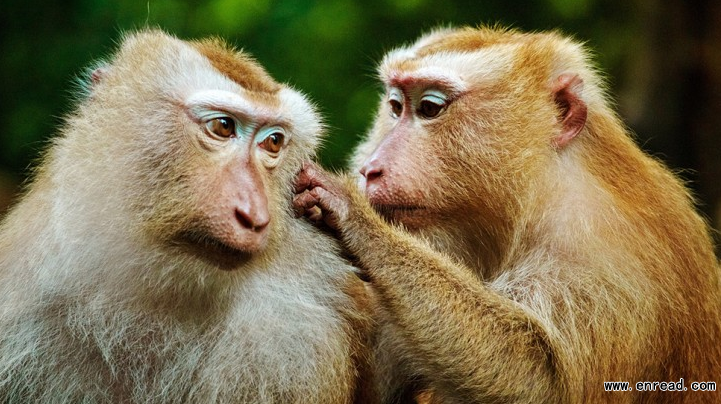动物们也需要各种各样的护理
|
我们都需要时不时的做一些护理,动物世界也不例外。 We all need a little pampering from time to time and the animal world is no exception. Creatures from the same species, and frequently from a completely different one, engage in a variety of cleaning and grooming behaviours for a wide range of disparate reasons. So slip on a fluffy robe, lie back, relax and enjoy a mini spa day courtesy of these beautiful bathing beasts. HAIR TREATMENT Let’s start at the top shall we? It’s a familiar, practically iconic, image. A group of primates, huddled together, grooming one another. Delicately picking at, and stroking, the fur of a companion and popping the occasional tasty morsel into their mouths. But what purpose does it serve? This allogrooming, or tending to the pelt of a member of the same species, is certainly social, used to indicate dominant social structure as well as to help fend off disease from germ-carrying parasites or ticks. But there are other, more surprising benefits. In macaques, this sort of attention has been shown to reduce heart rate and alleviate stress, while a study of vervet monkeys has shown that grooming helps to insulate their fur by fluffing it up like a duvet. FACIAL Sometimes a grooming or cleaning regime helps to reach the parts that other grooming can’t reach. Honey bees are fastidious cleaners. Through millions of years of evolution, they instinctually know that their hive has to be kept completely clean of microbes and any other germ-ridden threat from the outside world. Which is tricky, as they tend to deal in the transportation of sticky substances such as pollen and propolis, or ‘bee glue’ which is used to construct their hives. To make sure they are free of such residue, a specially designated worker bee will clean the mouth parts, antenna and any other bits of the insect that they can’t quite reach themselves. TEETH CLEAN But you don’t have to rely on members of your own clan to help keep spick and span. Some quite extraordinary, symbiotic relationships have developed between differing species which occasionally involve creatures that would usually be viewed as predator and prey. One of the more remarkable involves the Nile Crocodile and the Egyptian Plover. Against every natural instinct pulsating through its little bird brain, the plover flies into the croc’s mouth and frees food that’s stuck to their not insubstantial teeth. As well as the birds getting a quick snack, it helps to stave off infection that trapped morsels can cause in the crocodile’s mouth. MASSAGE If you’ve ever known or been in close contact with a cat, you’ll appreciate that they have a tendency to be needy. And kneady. Yes, cats love to knead. They push on a surface - another cat, a cushion, their owners - with a distinctive left paw, right paw motion, as if they are massaging whatever they are touching. Or possibly making bread. But why do they do it? In fact, no one is really sure. One theory is it’s a throwback to kittenhood, when it was a technique used to start the flow of milk from their mother’s teat, so they repeat it when feeling safe and content. Another notion is that it harkens back to ancestral big cat behaviour, when they would trample down a soft space before sleeping or giving birth. Or else it’s a territorial thing, marking a spot with the scent glands on their paws. Nothing is ever straightforward with cats. PEDICURE Thankfully, that strange craze for fish being used to nibble dead skin from people’s feet as a form of pedicure has passed by. Unless you’re a hippo. Hippos are known for being incredibly bad-tempered and quick to anger. So most animals steer well clear of them once they appear. Except for the wily barb fish who shadows a wallowing hippo as it relaxes on a riverbed, then nibbles and chews at its patient’s skin, removing parasites and unwanted intruders from any cracks and scars on the surface. They even delve into the hippo’s mouth for a quick dental check. Rather than being annoyed, the hippo seems to enjoy the experience and then actually goes into a sort of trance after being attended to, lying in the water, eyes closed and without a care in the world. DERMABRATION It may appear to be an unfeeling shield of bone, but the shell of the Hawaiian green sea turtle is covered in living skin and needs to be looked after. Many types of fish, such as the striking yellow tang fish, line up to clean algae from their shells, acting like a sort of ‘fish car wash’. The turtles even adopt a specific, ‘standing on tiptoe’ posture, so every inch of them can be dealt with. Some researchers believe that the turtles don’t necessarily appreciate why the algae needs to be removed, or even if it necessarily has to be cleaned at all, and so they partake in this behaviour merely for the pleasant tickling sensation it produces. |









